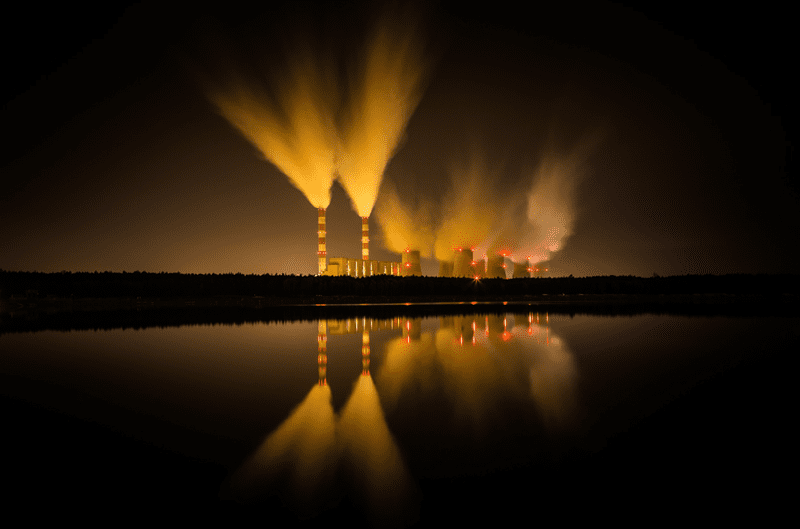Has the demise of the conventional power plant been greatly exaggerated? As the world grapples with an energy crisis, several governments are returning to coal, gas and nuclear, and more are looking for ways to either extend the lifespan of their existing fleet or accelerate new projects.
The comeback of conventional power plants may be more than just a blip. In a world where global demand for electricity is still rapidly growing – the IEA’s 2022 World Energy Outlook Report assesses that it will grow by 25 to 30 percent by 2030 and by nearly 80 percent by 2050 – they are expected to play an essential role in offsetting the intermittency of wind and solar. However, this comeback will not put an end to the quest for cleaner, greener and smarter power generation. A new breed of conventional power plants that leverage data and cutting-edge digital solutions are now seeing the light of day, but what are the technologies shaping their future?
Operators Bet on IIoT and EAM to Make Plants Safer and More Reliable
Using sensors and the Industrial Internet of Things (IIoT) in power plants is nothing new. A single piece of equipment, such as a gas turbine, can carry hundreds of sensors, and modern power plants can contain tens of thousands. These sensors can accomplish a variety of tasks. By detecting any change in temperature, pressure or seismic forces, among others, they play a key role in making plants safer. The data they produce also feeds machine-learning algorithms and predictive analytics that can help operators detect early signs of failures of critical components, optimize their maintenance and avoid costly shutdowns.
Unlocking these benefits typically requires overcoming two challenges. First, retrofitting existing plants, which sometimes have been in operation for several decades, can be difficult and necessitate a step-by-step, goal-oriented implementation and the support of an experienced partner. Secondly, these data streams must be gathered in a single interface and connected to other sources, such as operator rounds, equipment information or operational data from the plant’s Industrial Control Systems (ICS). The lifespan of a power plant’s equipment spans decades, and plant operators often struggle with undigitized information, as well as incompatible software and data formats. This makes it even more important to have a central, modern application, such as a digital twin or an Enterprise Asset Management platform, that can serve as a “super-connector” of different data sources and exploit them with AI-powered analytics.
Three Data-Driven Approaches: Predictive Maintenance, Root-Cause Analysis, and Carbon Reduction
Such a platform will also be central to another emerging imperative: Proving the plant’s bona fide sustainability and compliance credentials by the numbers. For power plants that rely on fossil fuels, the main objective will be to demonstrate that they can reliably reduce their emissions. Observers are also keeping a close eye on groundbreaking initiatives like the Keadby 3 gas-fired power station, set to become the U.K.’s first facility outfitted with carbon capture storage (CCS) technology. This innovative approach aims to store carbon dioxide in previously depleted gas and oil wells beneath the ocean.
For nuclear plants, the focus will not be on carbon emissions, but on their ability to function safely and comply with regulatory requirements. As several countries, including the U.K., extend the lifespan of some of their older facilities, public opinion will pay increasing attention to maintenance and downtime.
This is a domain where data-driven power plants can shine. Advanced analytics can enable predictive maintenance and ensure equipment can be fixed before it fails – an approach that can increase equipment uptime by 10 to 20 percent, according to Deloitte, a global consultancy. In addition, cutting-edge platforms can also perform root-cause analysis (RCA) and suggest corrective actions.
Cybersecurity as a License to Operate
As data plays an increasing role in decision-making for automated processes, cybersecurity is becoming a growing concern. In the past year, energy and commodities infrastructure have become prime targets for malicious actors. IBM has revealed that the U.K. energy sector was the primary target of 24 percent of all cyberattacks in the country last year, so the energy sector is clearly a top target for bad actors.
Considering these threats, many companies are looking for solutions to bolster the cybersecurity of their Operational Technology (OT) and mitigate the risks posed by cyberattacks. For critical infrastructure such as conventional power plants, a key focus area is identifying risk by capturing a holistic view of your asset inventory, coupled with a full understanding of the attack surface by asset location, device type, patch status, and Common Vulnerabilities and Exposures (CVE).
Power generation plants have a mix of OT/IT systems, including various types of hardware, software and communication protocols. Having a comprehensive, evergreen inventory of all OT and IT assets and endpoints is key to understanding the areas of weakness that exist in your environment. Should a breach in security occur, having an effective incident response and recovery process is paramount to getting back to operational status as quickly as possible, i.e., a restore plan with multiple backups.
The challenge many owner operators have is the large number of geographically spread facilities, limited cyber resources, and way too many vulnerabilities to manage effectively. Tackling cyber risks, along with operational and environmental ones, will be of paramount importance for nuclear, gas and coal power plants in the years ahead. Their ability to achieve tangible outcomes in safety, security and sustainability will not only have a considerable impact on the financial results of their operators, but also on public perception and energy policies in the next decade.
Derek Horn currently serves as sales director for Hexagon Asset Lifecycle Division, based in the U.K., and is responsible for Hexagon’s OT cybersecurity business for Europe and South Africa.
Prior to joining Hexagon, Horn has worked all his career within the industrial process industries varying from dynamic positioning (DP) of ships and semi-submersibles, DCS commissioning engineer on oil platforms (UKCS), manager of subsea operations for both top-side and sub-surface instrumentation, and spent several years working in the field of Advanced Process Control/Model Predictive Control across a wide range of industrial sectors ranging from: Polymers, bioethanol, mining, minerals and cement industries, and consumer packaged goods (detergent, milk and whey powders) focused on the real-time optimization of continuous and batch process plant and equipment.
In the last six years, Horn has worked extensively in ICS/OT cybersecurity for Hexagon across a variety of industries including upstream, downstream, power generation and transmission, as well as pharma and life sciences.
Horn studied electrical engineering in Aberdeen, coupled with an MSc from Lancaster University in England.



